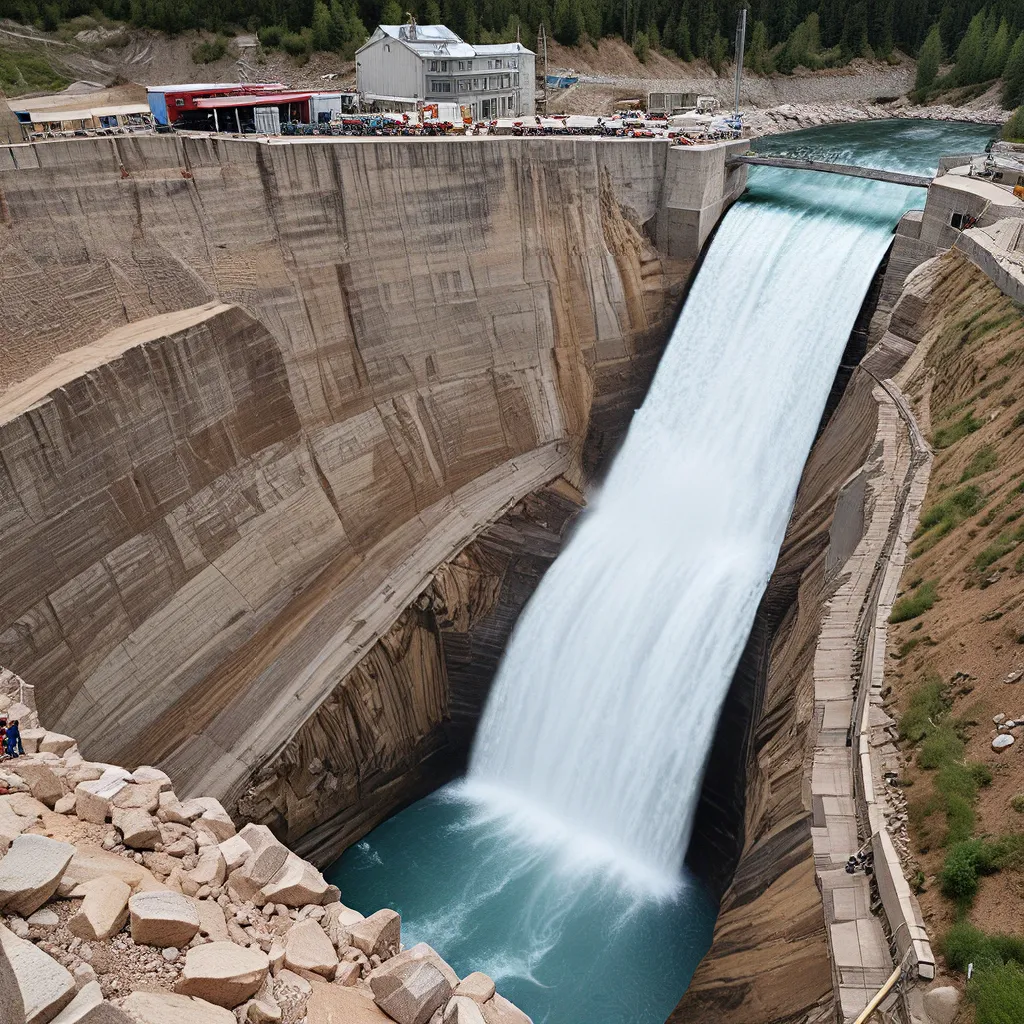
Hydropower Unveiled: Tapping into the Untapped Potential of Flowing Water
Imagine a world where the power of nature is harnessed to light up our homes, power our industries, and drive us towards a greener future. Well, my friends, that world is within our grasp, and the key lies in the untapped potential of flowing water – the mighty force of hydropower.
As I delve into the captivating world of hydropower, I can’t help but feel a sense of excitement and wonder. It’s a technology that has been powering communities for centuries, yet its true potential remains largely untapped. Just think about it – the very rivers and streams that flow through our landscapes hold the power to transform our energy landscape, and it’s time we unlock this treasure trove of renewable energy.
The Hydro Hustle: Harnessing the Power of Water
Now, I know what you’re thinking – hydropower, that’s just about building giant dams, right? Well, my friends, that’s only one piece of the puzzle. Hydropower actually encompasses a diverse range of technologies, each with its own unique advantages and applications.
Take, for instance, the mighty conventional hydropower dam. These towering structures harness the kinetic energy of flowing water to drive turbines that generate electricity. According to the International Energy Agency (IEA), the growth of hydropower plants worldwide is set to slow down this decade, which could put at risk the ambitions of countries aiming to reach net-zero emissions. But fear not, as there are thousands of dams planned to be built in the coming years, with many in emerging economies like the Balkan region, Ethiopia, and Pakistan.
But the hydro hustle doesn’t stop there! Seasonal pumped hydropower storage plants are another ingenious way to tap into the power of water. These artificial reservoirs, often situated at higher altitudes, work by using excess energy during off-peak hours to pump water uphill, only to release it during times of high demand to generate electricity. IIASA researchers have discovered that the Indus basin, which stretches across parts of Afghanistan, China, India, and Pakistan, has the potential to be a global leader in seasonal pumped hydropower storage, with levelized energy storage costs as low as $2 per megawatt-hour (MWh) – a fraction of the cost of battery storage.
The Indus Basin: A Hydropower Goldmine
As I delve deeper into the world of hydropower, one region that keeps catching my eye is the Indus basin. This vast expanse, stretching across several countries, is a veritable hydropower goldmine waiting to be unleashed.
According to the researchers at the International Institute for Applied Systems Analysis (IIASA), the Indus basin is a prime location for harnessing the power of flowing water. With its high altitudes and abundant water resources, the region is perfectly positioned to become a global leader in both conventional hydropower and seasonal pumped storage.
What’s particularly exciting is that the Indus basin’s hydropower potential is still largely untapped. Pakistan, for instance, currently generates 100% of its hydropower from the Indus basin, and there’s still so much more to be tapped. Imagine the transformative impact this could have on the region’s energy landscape, powering communities, driving economic growth, and paving the way for a sustainable future.
Overcoming the Challenges: The Hydro Hurdles
Now, I know what you’re thinking – if hydropower is so great, why isn’t it already powering the world? Well, my friends, the truth is, there are a few hydro hurdles we need to overcome.
One of the biggest challenges is water management. The IIASA researchers found that many of the issues faced in the Indus region regarding hydropower are due to larger water management problems, such as high population growth, rapid urbanization, industrialization, environmental degradation, and outdated irrigation systems. These factors can lead to flooding, water scarcity, and other challenges that can hamper the development of hydropower projects.
But fear not, because the hydro heroes are on the case! Engineers and scientists are working tirelessly to develop innovative solutions to these water management challenges. From advanced monitoring systems to adaptive management practices, they’re finding ways to optimize energy production while safeguarding the environment.
Another hurdle is the seasonality of the Indus region. The researchers found that the Indus River deals with droughts in the winter and monsoon season, as well as melting snow and ice masses from the mountains in the summer, which considerably increases the flow of the river and leads to regular flooding events. This kind of variability in water flow can be a real challenge for hydropower projects.
But that’s where the ingenious seasonal pumped hydropower storage plants come in! By using excess energy during times of high water flow to pump water uphill, these systems can store that energy for release during drier periods, helping to smooth out the ebbs and flows of the Indus River.
Hydropower’s Bright Future: Powering a Sustainable Tomorrow
As I’ve delved deeper into the world of hydropower, I can’t help but feel a sense of excitement and optimism for the future. This renewable energy source has the potential to transform the way we power our world, and the Indus basin is just the tip of the iceberg.
Imagine a world where the rivers and streams that flow through our landscapes are harnessed to power our homes, our industries, and our cities. A world where the untapped potential of water is unleashed to drive us towards a greener, more sustainable future. That’s the promise of hydropower, and it’s a promise that’s within our grasp.
So, my friends, let’s dive in and explore the fascinating world of hydropower. Let’s uncover the secrets of the Indus basin and discover how this untapped resource can power our tomorrow. Together, we can unlock the true potential of flowing water and create a brighter, more sustainable future for all.